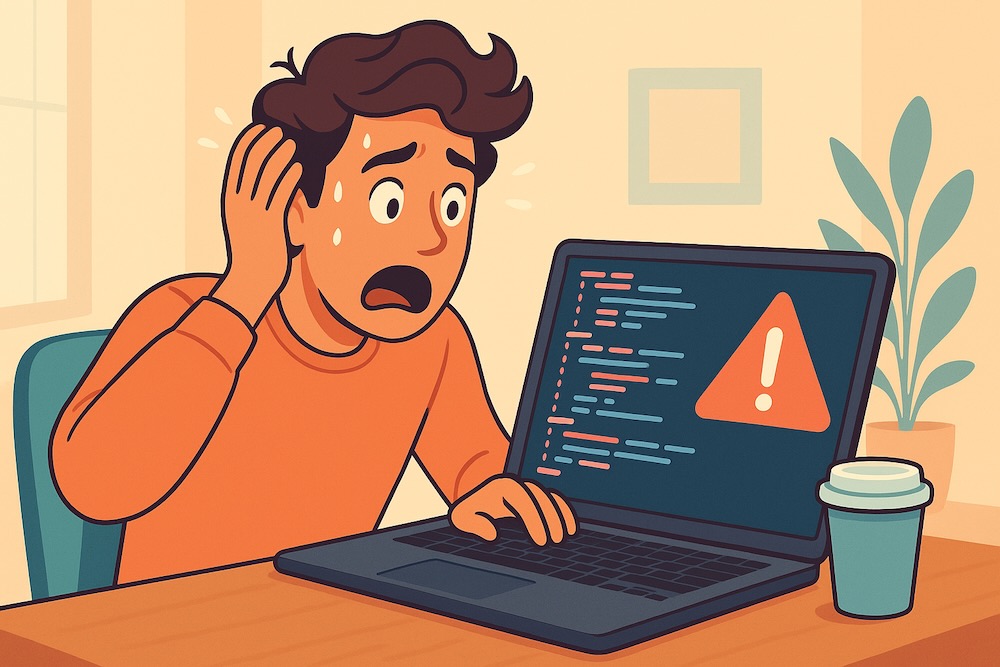
You shipped it. That app you "vibe coded" with your team is live, and people are actually using it. The late nights, the endless stream of coffee, and the "it just works, don't ask why" moments, they all paid off.
Congratulations. Now for the bad news.
That app, held together by hastily written code and your AI assistant, is a significant liability. The very things that helped you build it so fast are now a ticking time bomb as you try to level up from a cool project to a real business.
I get it. I work with founders like you all the time. Your superpower is speed. You had to get a Minimum Viable Product to market before you ran out of cash. But now you have real users, maybe even paying customers. The game has changed.
That AI coding assistant that felt like a secret weapon? It's been leaving your doors and windows unlocked.
Here's the uncomfortable truth: you can't build a production-grade, trustworthy business on an MVP foundation. The "vibe" that got you here will get you killed in the next phase. It's time to professionalize, and that starts with security.
There's a reason your AI coding buddy is so fast: it cuts corners. It's trained on a universe of public code, including code that contains known security flaws. It doesn't know better. It just copies the pattern.
How bad is it? A recent Veracode study found that AI-generated code introduces a security vulnerability 45% of the time.
Let that sink in. Nearly half the code your AI wrote probably has a hole in it.
While you were busy building features, you also accumulated a significant security debt. Now that you have real customer data on the line, that debt is about to come due. And the collection agency is a hacker who couldn't care less about your burn rate.
These "vulnerabilities" aren't just abstract tech problems; they are business-ending events waiting to happen. For a growing company, they translate into three main nightmares, often categorized by security pros like OWASP:
Your MVP was built to prove a concept. A production app needs to be a fortress.
Okay, don't panic. You don't have to throw everything away and start over. You just need to add some grown-up supervision to your process.
This is where you adopt established security frameworks. The gold standard is the NIST Secure Software Development Framework (SSDF). It sounds corporate and boring, but think of it as the official checklist for "how to build software that doesn't immediately fall over or get hacked."
It's your roadmap for turning your scrappy code into a secure, sellable asset.
You can start professionalizing your codebase in the next 90 days. This isn't about slowing down; it's about building a solid foundation so you can go even faster later, safely.
You need to implement automated code scanning. Tools for Static Application Security Testing (SAST) are like a security expert automatically reviewing every single line of code, whether human-written or AI-generated, before it goes live.
What happens when the scanner finds a critical bug at 2 a.m.? Who fixes it? Based on what you learn in the first month, create a simple, one-page playbook.
You're not doing this for fun. You're doing it to build a valuable company. So, track the business metrics.
The "move fast and break things" phase is officially over. Your app works. People want it.
Now they need to trust it.
Your customers, partners, and future investors aren't buying into a vibe; they're buying into a reliable, secure solution. Taking your code from MVP to production-grade isn't just a technical step; it's the moment when you decide your app is ready to become a fully functional, production-ready product.
More insights from the ai-software category
Get the latest articles on AI automation, industry trends, and practical implementation strategies delivered to your inbox.
Discover how Xomatic's custom AI solutions can help your organization achieve similar results. Our team of experts is ready to help you implement the automation strategies discussed in this article.
Schedule a Consultation